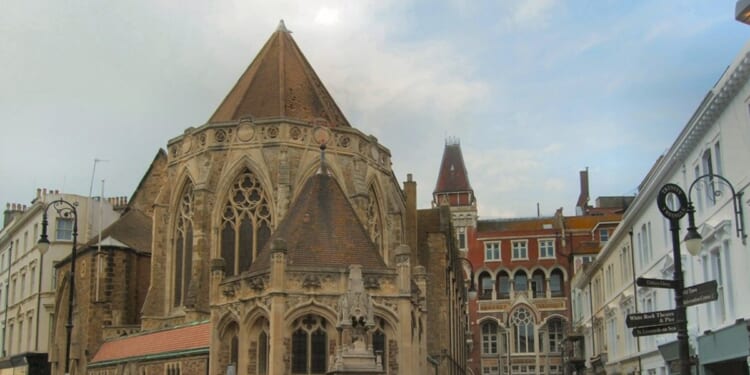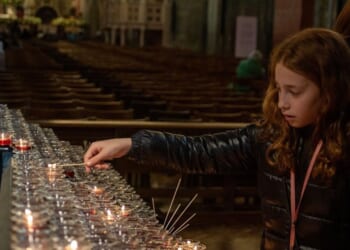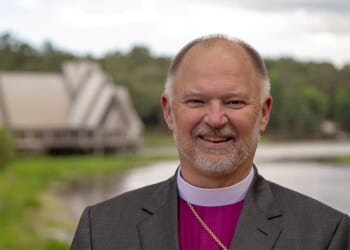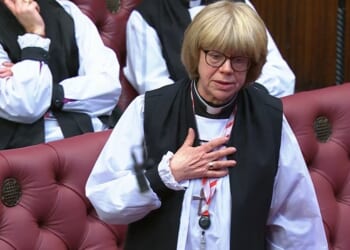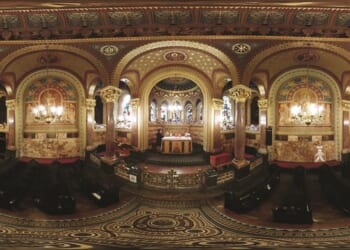PLANS to carry out the “most ambitious restoration project in the history of the area” at Holy Trinity, Hastings, have won a £4.5-million grant from the National Lottery Heritage Fund (NLHF).
Alongside restoring the building, which was placed on Historic England’s Heritage at Risk Register in 2019, the PCC has set out how it intends to “realise [the church building’s] community potential as the largest interior space in this area of Hastings” and to make the church “the central hub of a substantial community activity programme”.
The Vicar, the Revd Simon Larkin, said: “This church, once at risk of closure, is now fully alive and a place of hope and inspiration for so many. This grant is a wonderful endorsement of all the brilliant work our teams are doing to serve this amazing town, and we are delighted that thousands more will be part of this ongoing story.”
Designed by S. S. Teulon — described by Historic England as “the most important of the rogue architects of the Gothic Revival” — Holy Trinity is listed Grade II*. The foundation stone was laid in 1857 by Lady Waldegrave, a clergy daughter and philanthropist who endowed several churches in the area.
The parish of Holy Trinity has high levels of deprivation and is located in the 13th most deprived borough in the country. An “activity planner” produced by the church last year reports that its “church community has grown from 20 in 2014 — when the church was ‘nearly defunct’ — to around 530 weekly visitors in 2023, including some of the most marginalised people in the town”.
Holy Trinity is now part of the Holy Trinity, Brompton, network after a church-plant from St Peter’s, Brighton — itself once at risk of demolition — in 2014. Holy Trinity’s quinquennial survey in 2022 warned that several issues needed to be rectified to ensure continued safe use; there was a need for urgent repairs to the exterior. The new multi-million-pound award follows a grant of £34,000 from the Heart of Hastings Community Land Trust to develop the application to the NLHF, which awarded a Development Phase grant of £479,000 last year.
The planned completion date for the work is 2028. The church has set out hopes “that engagement with our church, our treasures, and our heritage will encourage people to discover their own purpose and place within this community and create a renewed sense of pride and hope engendered by our wonderful building”. Visitor numbers are expected to more than treble, reaching around 7600 a year. There are plans for 167 annual activities and more than 200 volunteers.
The plans include the preservation of a missal by the master calligrapher Edward Johnston, which has been described as the finest illuminated manuscript since the Reformation.
Last week, the Victorian Society welcomed the planned restoration work, but expressed sadness that “despite our objections and concerns from Historic Buildings & Places, the Church Buildings Council and the local Council”, the diocesan Consistory Court has given permission for the removal most of the choir stalls. The plans for the interior follow an earlier reordering to create more flexibility.
The church is located in the “High Street Heritage Action Zone” in Hastings, which is part of a £95-million government-funded programme that aims to “unlock the potential of historic high streets across England”. Hastings was identified in the current diocesan strategy in Chichester as a target for investment, “on the basis of particularly low levels of churchgoing and high levels of deprivation” (News, 15 August). It records that average weekly attendance at Holy Trinity has grown from 55 adults and one child in 2014 to 338 adults and 120 children in 2023.
A four-year vacancy began in 2010 at Holy Trinity, and this was followed by a shift in tradition. In 1934, the Church Times described the church’s story as one of “full and steady progress to the setting forth, as today, of the full essentials of the Catholic Faith”.
The church’s activity planner reports that there are three local major parish churches also on the Heritage at Risk register and sets out plans to “share learning and provide mentoring”.
Several churches in the area have closed in recent years. They include St Leonard’s, St Leonards-on-Sea, in 2018, which, Historic England says, is still “vacant and deteriorating”. The Victorian Society warned this year that the Church Commissioners were “mooting demolishing” All Souls’, Hastings, which was closed in 2008 and has been for sale since 2012.

